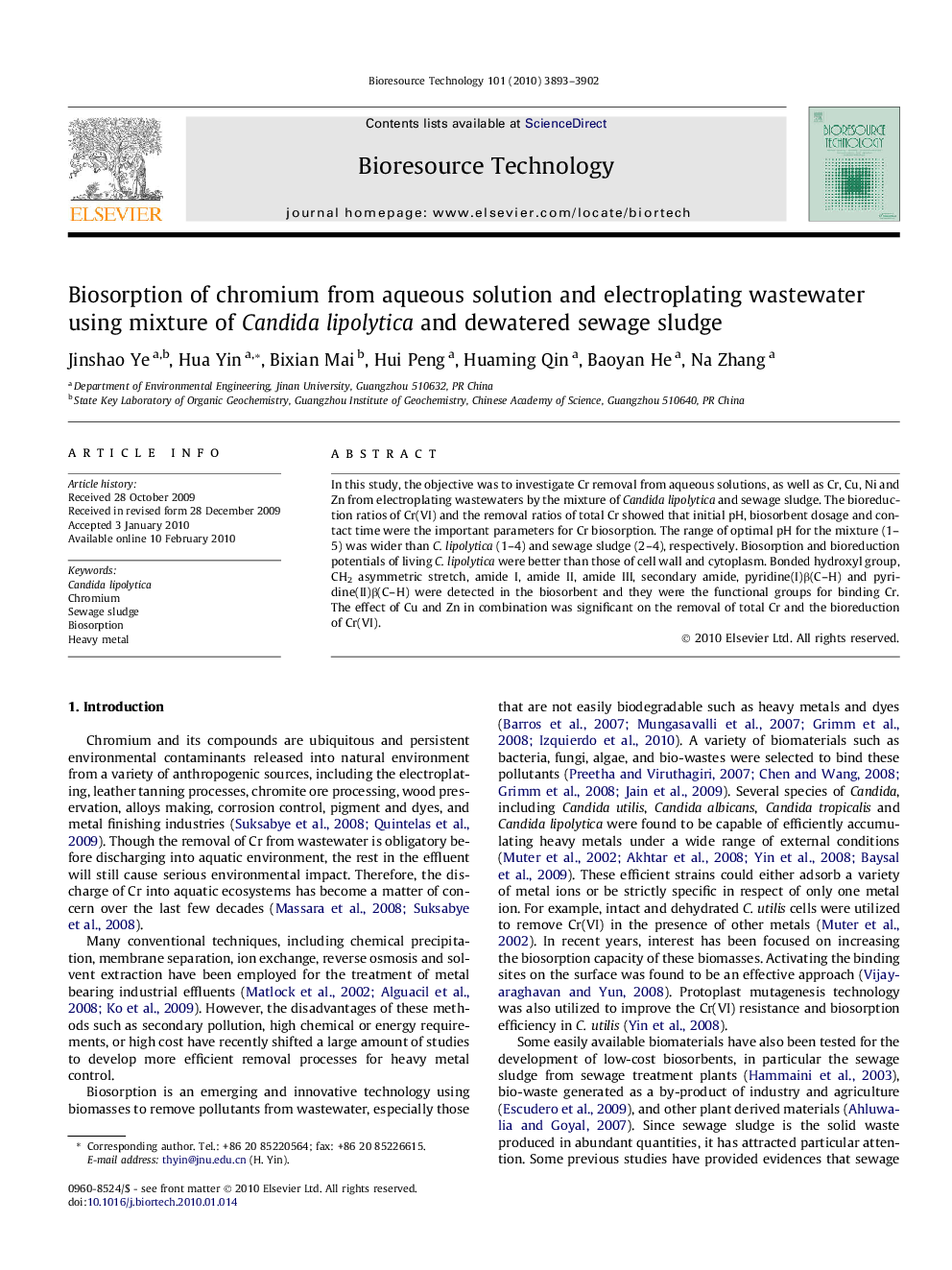| Article ID | Journal | Published Year | Pages | File Type |
|---|---|---|---|---|
| 683535 | Bioresource Technology | 2010 | 10 Pages |
In this study, the objective was to investigate Cr removal from aqueous solutions, as well as Cr, Cu, Ni and Zn from electroplating wastewaters by the mixture of Candida lipolytica and sewage sludge. The bioreduction ratios of Cr(VI) and the removal ratios of total Cr showed that initial pH, biosorbent dosage and contact time were the important parameters for Cr biosorption. The range of optimal pH for the mixture (1–5) was wider than C. lipolytica (1–4) and sewage sludge (2–4), respectively. Biosorption and bioreduction potentials of living C. lipolytica were better than those of cell wall and cytoplasm. Bonded hydroxyl group, CH2 asymmetric stretch, amide I, amide II, amide III, secondary amide, pyridine(I)β(C–H) and pyridine(II)β(C–H) were detected in the biosorbent and they were the functional groups for binding Cr. The effect of Cu and Zn in combination was significant on the removal of total Cr and the bioreduction of Cr(VI).
